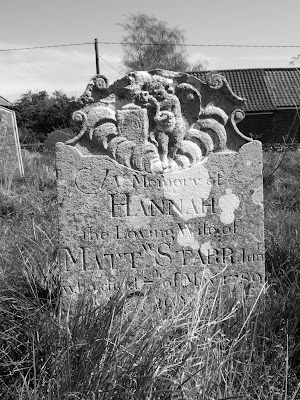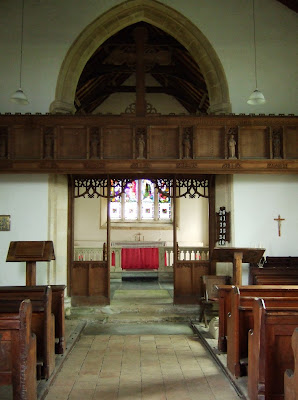 |
Project Gutenburg :
Dealings with the Dead, Volume I (of 2) A Sexton of the Old School Boston 1856 |
How long—oh Lord—how long will thy peculiar people disregard the simple, unmistakable teachings of common sense, and the admonitions of their own, proper noses, and bury the dead, in the very midst of the living!—Above all, how long will they continue to perpetrate that hideous folly of burying the dead, in tombs! What a childish effort, to keep the worm at bay—to stave off corruption, yet a little while—to procrastinate the payment of nature’s debt, at maturity—DUST THOU ART AND UNTO DUST THOU SHALT RETURN!—For what? That the poor, senseless tabernacle may have a few more months or years, to rot in—that friends and relatives may, from time to time, be enabled, upon every re-opening of the tomb, to gratify their morbid curiosity, and see how the worms are getting on—that, whenever the tomb is unbarred, for another and another tenant, as it may often happen, at the time, when corruption is doing its utmost—its rankest work—the foul quintessence—the reeking, deleterious gases may rush back upon the living world; and, blending with ten thousand kindred stenches, in a densely peopled city, promote the mighty work of pestilence and death. Who does not sympathize with Cowper!
Oh for a lodge, in some vast wilderness,
Some boundless contiguity of shade,
Where the atrocious smells of docks, and sewers,
eruptive gas, and rank distillery
May never reach me more. My lungs are pain’d,
My nose is sick, with this eternal stench
Of corpse and carrion, with which earth is fill’d.
I am not unmindful, that, in a former number of these Dealings with the Dead, I have passed over these burial-grounds, and partially exhibited the interior of these tombs already. But there really seems to be a great awakening, upon this subject, at the present moment, at home and abroad; and I rejoice, that it is so.
 |
" hideous folly of burying
the dead, in tombs!
© Godric Godricson |
I am aware, that, within the bounds of old, peninsular Boston, no inhumations—burials in graves—are permitted. This is well.—Burials in tombs are still allowed.—Why? This mode of burial is much more offensive. In grave burial, the gases percolate gradually; and a considerable portion may be reasonably supposed to be neutralized, in transitu. This is unquestionably the case, unless the grave is kept open, or opened, six times, or more, on the speculation principle, for the reception of new customers. In tomb burial, it is otherwise. The tomb is opened for new comers, and sometimes, most inopportunely, and the horrible smell fills the atmosphere, and compels the neighboring inhabitants, to close their windows and doors.
As, with some persons, this may seem to require authentication, without leading the reader to every offensive graveyard in this city, I will take a single, and a sufficient example—I will take the oldest graveyard in the Commonwealth, and the most central, in the city of Boston. I refer to Isaac Johnson’s lot, where, in 1630, his bones were laid—the Chapel burying-ground. The Savings Bank building bounds upon that cemetery. The rooms of the Massachusetts Historical Society are over the Bank.
The stench, produced, by burials in the tombs, in that yard, during the summer of 1849, has compelled the Librarian to close his windows. Tomb burial, in this yard, has not been limited to deceased proprietors, and their relatives; it has, in some instances, been a matter of traffic. I have been struck with the present arrangement of the gravestones, in this yard. Some ingenious person has removed them all, from their original positions, and actually planted them, “all of a row,” like the four and twenty fiddlers—or rather, in four straight rows, near the four sides of the graveyard. This is a queerer metamorphosis, than any I ever read of. Ovid has nothing to compare with it. There they are, every one, with its “Here lies,” &c., compelled to stand forever, a monument of falsehood.
 |
"ten thousand kindred stenches"
© Godric Godricson |
Of all the pranks, ever perpetrated in a graveyard, this, surely, is the most amusing. In defiance of the lex loci, which rightfully enjoins solemnity of demeanor, in such a place—and of all my reverence for Isaac Johnson, and those illustrious men, who slumber there, I was actually seized with a fit of uncontrollable laughter; and came to the conclusion, that this sacrilegious transposition must have been the work of Punch, or Puck, or some Lord of misrule. As I proceeded to read the inscriptions, my merriment increased, for the gravestones seemed to be conferring together, upon the subject of these extraordinary changes, which had befallen them; and repeating over to one another—“As you are now, so once was I.” As it happened, in the case of Major Pitcairn, should any person desire to remove the ashes of his ancestor, these misplaced gravestones would surely lead to the awakening of the wrong passenger; and some venerable old lady, who died in her bed, may be transported to England, and buried under arms, for a major of infantry, who died in battle.
Why continue to bury in tombs? Surely the sufferance on the part of the City Government, does not arise, from a respect for vested rights!!! If the City Government has power to close the offensive cellars in Broad Street, and elsewhere, being private property, because they are accounted injurious to public health, why may they not close the tombs, being private property, for the very same reason? Considerations of public health are paramount. When, upon an application from a number of the liquor-sellers, wholesale and retail, in this city, Chancellor Kent gave his opinion, adverse to their hearts’ desire, that the license laws were constitutional, he alluded, analogically, to the power of the Commonwealth, to pass sanatory laws. If the municipal power were deemed inadequate, legislation would give all the power required. For it would, indeed, be monstrous, having settled the fact, that the public health suffered, from burial in tombs, to suppose it a remediless evil.
The slaughter-houses and tanneries, which once existed, in Kilby Street and Dock Square, would not be tolerated now. Originally, they were not nuisances. Population gathered around them—their precedency availed them nothing—they became nuisances, by the force of circumstances. The tombs, in the churchyard, were not nuisances, when population was sparse—though they are so now. But the fact I have stated will increase the evil, from day to day: there can be no more burials, in graves, within the city proper—people will die—and, as we have not the taste nor courage to burn—they must be buried—where? In the tombs—which, as I have stated, is the most offensive and mischievous mode of burial. I have already alluded to some instances of traffic, connected with certain tombs, in the Chapel yard. If some plan be not adopted, a new line of business will spring up, in which the members of my profession will figure, to some extent: many of the present owners of tombs will sell out, and move their dead to Mount Auburn, or Forest Hills; and the city tombs will be crammed with as many corpses, as they can hold, by their speculating proprietors. Rather than this, it would have been better to continue the old mode of earth burial. The remedy is plain—the fields are before you—carry out “your dead!”
 |
"The worm and corruption" © Godric Godricson |
A famous preacher of eternal torment, and who always, in addition to the sulphurous complexion of his discourses throughout, devoted three or four pages, at the close, exclusively to brimstone and fire; is said, upon a special occasion, to have produced a prodigious effect, upon the more devoted of his intensely agitated flock, by causing the sexton, when he heard the preacher scream BRIMSTONE, at the top of his lungs, to throw two or three rolls, into the furnace below, whose fumes speedily ascended into the church.
This anecdote came instantly to my recollection, some twenty years ago, one Sabbath morning, while attending the services in St. Paul’s church, in this city. The rector was absent, and a very worthy clergyman supplied his place. In the course of his sermon, he repeated, in a very solemn tone, pointing downward with his finger, in the direction of the tombs below, those memorable words of Job—If I wait, the grave is mine house: I have made my bed in darkness. I have said to corruption, Thou art my father: to the worm, Thou art my mother and my sister. Almost immediately—the coincidence was wonderful—I was oppressed by a most offensive stench, which certainly seemed to be germain to the subject. It became more and more powerful. It seemed to me, and I call myself a pretty good judge, to be posthumous, decidedly. I certainly believed it proceeded from the charnel house below. My eyes turned right and left, to see how my neighbors were impressed. The females bowed their heads, and used their handkerchiefs—the males were evidently aware of it; but, with a slight compression of their noses, kept their eyes fixed upon the preacher. Two medical gentlemen, then present, and yet living, pronounced it to be the worm and corruption, and connected it with the burial of a particular individual, not long before.
The case was carefully investigated, by the wardens and others; who were perfectly satisfied, that this horrible effluvium was, very probably, produced, by the burning of a heretic, in the form of a church mouse, that had taken up his quarters, in the pipe or flue, and was thus converted into an unsavory pastille.











































